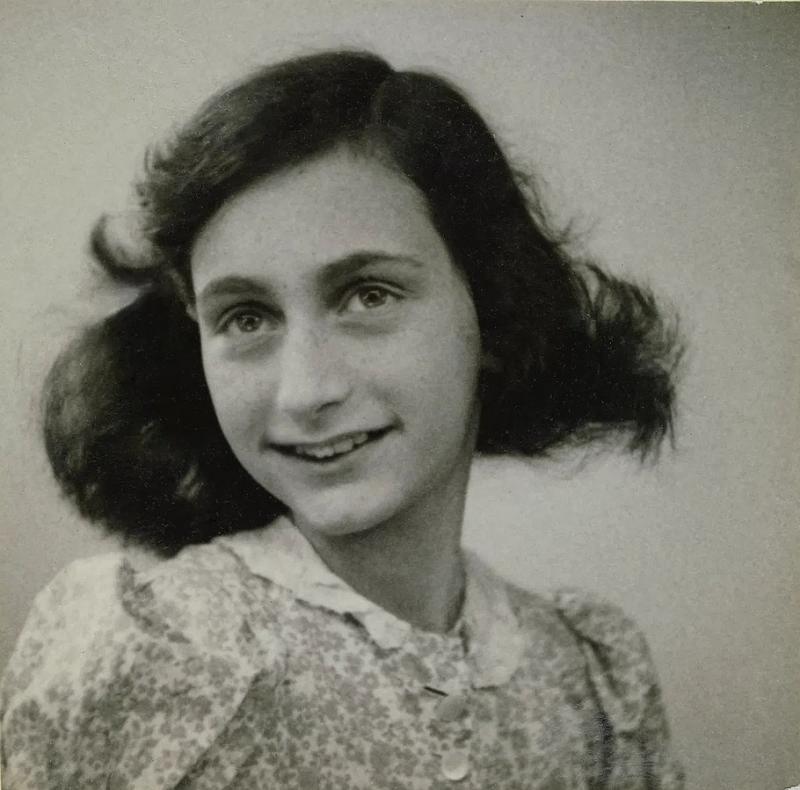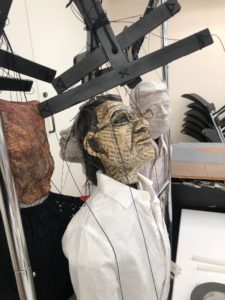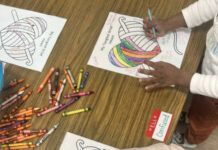
By Lisa Traiger
More than 75 years after Anne Frank — the best-known victim of Hitler’s murderous master plan to exterminate the Jews — perished at Bergen-Belsen, the famed teenage diarist’s afterlife is, for better or worse, a work in progress, like the diary itself, which she edited assiduously while in hiding. Initially published in the Netherlands in 1947, just two years after her death, “The Diary of a Young Girl” and Anne’s story have been idealized, mythologized, universalized, commodified and popularized.
The diary and Anne’s vivacious and heartfelt account of her life as a Jewish teenager hidden in what she called “The Secret Annex” has become standard reading in middle and high school classes. Every cultural or artistic medium — stage, film, television, novels, opera, ballet and now Twitter and TikTok on social media — has a spin on Anne’s life story.
Again, Anne made headlines in January with the revelation of new theories on who betrayed the family’s hiding place. An extended “60 Minutes” report on Jan. 16 recounted the multiyear international investigation that Rosemary Sullivan examines in a newly published book, “The Betrayal of Anne Frank.”
“It’s amazing that we’re still talking about Anne Frank in 2022,” said Neil Rubin, who chairs the Jewish history department at Beth Tfiloh Dahan High School, and is a former senior editor of the Baltimore Jewish Times. “That tells me all I need to know about the lasting nature of her story.”
New York-based playwright Rinne Groff attributes the perpetual popularity of Anne Frank’s journals to her ability to narrate her experiences with an adeptness and vivid description of a far more experienced writer. She notes author Francine Prose’s literary study, “Anne Frank: The Book, The Life, The Afterlife,” which asserts the diary is a work of art. “Prose says that we have to understand [Anne Frank] as an amazing writer, a serious writer, a writer who was thinking about writing and not just a girl keeping a diary,” Groff said. “She was thinking about herself up as a writer and about publication. That allows us to feel we are let inside of her world.”
The author of “Compulsion or The House Behind,” a play about the making of a play based on Anne’s diary, Groff — like so many over the decades who encounter the many versions of Anne — has long been fascinated with Anne’s legacy, particularly how it was popularized on stage and in film.
“It is moving and wonderful that so many people read her text and think to themselves, ‘I understand her completely. I understand her in a deeper and more personal way than anyone else possibly could,’” Groff said.
[Baltimore Artist Related to Anne Frank Shows Work at Frank Center]
Anne Frank and teaching the Holocaust
While most Americans, particularly Jewish Americans, are introduced to Anne’s journal and story as they enter their teenage years — the diarist received her first diary on her 13th birthday — Groff, whose mother is Dutch, said, “I can’t remember a time when I didn’t know the name Anne Frank and hadn’t been to her house.”
This identification with Anne by generations of teenagers around the world — the diary is published in more than 70 languages — has become a part of many middle and high school curricula.
At Beth Tfiloh Dahan Community School, students first read the diary in middle school, when they are about the same age as Anne when she began journaling.
Rubin checked in with middle school English teachers who shared concerns that today’s 13 and 14 year olds aren’t as mature as Frank was. “What she was dealing with [is reflected as] an 18 year old,” Rubin said. “Very few 14 year olds could write the way she wrote, in part because of the context of her circumstances. She had to be reflective on things that, thank God, [today’s students] don’t know of.”
For 11th grade, Rubin uses the diary as a starting point to explore issues of morality and humanity in the Holocaust with his Jewish high school students.
At the Charles E. Smith Jewish Day School, Anne’s diary is not presently in the curriculum, although it had been years ago. Academic Dean Aileen Goldstein noted that middle and high school students at the Rockville school arrive with knowledge of the diary, either having read it or encountered the story through other media. She added there is only so much time in the classroom with a subject as complex and vast as the Holocaust.
The diary, as Prose wrote, has had a long afterlife, both literary as a first-hand document of the Holocaust and in adaptations. These included a Broadway play and subsequent productions, ballets, opera, movie adaptations of the play, a recent BBC television series, an official Twitter account from the Anne Frank House in Amsterdam, graphic novels, fan fiction and even cosplay videos on TikTok — where preteen and teenaged girls dress up, apply makeup and hairstyles to resemble the black-and-white photos of the teenage Holocaust victim and record themselves. Additional books, novels and articles illuminate the Frank story from other perspectives, including those who knew her as a child, met her at Bergen-Belsen or helped the families in hiding.
Initially, Otto Frank, Anne’s father and the sole survivor of the Secret Annex, hesitated to publish the diary, but, ultimately, he did just two years after the end of the war. It was his daughter’s wish to become a writer, and she herself rewrote, rearranged and edited sections of the diary. But in publishing, Otto Frank also sought deemphasize the Jewishness of the diary in favor of universal ideals of humanity.
At Indiana University Bloomington, Alvin Rosenfeld teaches the diary every year in a course called “Anne Frank and Hitler: Studies in the Representation of Good and Evil.” “I wouldn’t say Otto de-Judaized the diary, but he certainly wanted to universalize it, not make it a story about just Jews,” the English and Jewish studies professor said. And yet it was, and remains, a significant Jewish story: Otto Frank, his wife and daughters and the others went into hiding, and, ultimately, all but Otto Frank died solely because they were Jewish.
In a sense, Otto Frank played an integral role in manufacturing the Anne that generations now know, admire and turn to her quotes for internet memes. Beyond taking out most Jewish aspects from the initial diary publication, her father also edited out criticism his daughter had for her mother as well as her writing on puberty and sexuality.
Mostly unknown, another writer, the prolific Meyer Levin, one of the first U.S. journalists to enter newly liberated concentrations camps in 1945, read the diary soon after it appeared and took up a personal crusade to bring it to larger audiences specifically because of its Jewishness. Levin and Otto Frank corresponded. The American reporter helped with the first U.S. publication, then reviewed it glowingly in The New York Times, and penned his own dramatized version of the diary, while seeking a producer. But Frank had other ideas, which ultimately led to the 1955 Broadway production by Hollywood screen writers Frances Goodrich and Albert Hackett, who adapted it for the big screen in 1959. This widely viewed and disseminated dramatization deemphasized the Jewishness of Frank’s account.
A play about making the play
In “Compulsion or The House Behind,” playwright Groff explored this lesser-known aspect about how Anne’s diary and stage and film dramatizations became part of the cultural zeitgeist. Now, in succeeding decades it’s been commodified, praised and even misused — such as in recent arguments by vaccine and mask refusers that invoke Frank’s persecution as equivalent to mask regulations.
The play originally premiered off Broadway in 2011 with Mandy Patinkin playing the protagonist. A new production of “Compulsion” directed by Baltimore resident Johanna Gruenhut is on stage at Theater J in Washington, D.C., through Feb. 20. The question arises: Does a Jewish theater need to do an Anne Frank play?
[Johanna Gruenhut melds Judaism and theater]
“Oh yes,” said Theater J artistic director Adam Immerwahr. “This is a play about obsession … but this isn’t a Holocaust play. Anne Frank is a character, but is played by a marionette puppet. This is a play about especially the American, but also the worldwide, question of what do we do with these stories from the Holocaust, and who owns them?”
That is the question that compelled Groff to dig into Meyer Levin’s and Otto Frank’s disparate visions of the parochial Jewish story or the universal one.
“Some of us believe that they’re both,” Immerwahr continued. “But, at the time these events happened this was a matter of great debate.”
Do Jewish theaters need Holocaust plays?
While “Compulsion” centers on the production and commodification of the Anne Frank play, it is set after the Holocaust. “Since I arrived at Theater J six years ago, there hasn’t been a Nazi uniform or a yellow star on the stage,” Immerwahr said. “We’ve told a lot of Holocaust stories, but, in my time here, we have yet to do a play that is set in and during the Holocaust.” Instead, productions included plays about the American response to the Holocaust or its after-effects.
Asked why, he replied, “This is about my own obsession with how we talk about the Holocaust in Jewish arts and cultural spaces. How do we do that in a way that is respectful and not taking advantage of it in some maudlin way?”
Former Theater J Artistic Director Ari Roth noted that over his 18-year tenure, he produced more work about the Holocaust than any other subject except Israel. In programming Holocaust-themed works, he said, “It was important that it be enlivened and not feel rote and not feel like [the Holocaust] was codified to be lifeless and prone to having blasé or cynical reactions to it.”

(Adam Immerwahr)
Groff, the playwright, sees “Compulsion” as a play about making a play — it’s sausage-making about the complexities of relationships and artistic struggles that go into an artistic product. With her expertise in devised theater, she consciously decided not to make the young Anne a living character in the play. And the metaphor of her as a puppet — formed by papier mache pages from the diary, operated by strings — reflect the conscious efforts to retell, reimagine, recreate, revise, even reinvent this history, so every generation has its own Anne, and everyone, Jew and non-Jew alike, can feel a personal affinity to her.
“The reason ‘The Diary of Anne Frank’ as a play became so successful,” Groff said, “is that it was easier to digest because it ends before Anne Frank dies horrifically in a concentration camp thinking that every single person in her life had been murdered. She was starving, lice-ridden, abused …. ‘The Diary of Anne Frank’ play ends before she goes to a concentration camp. There is something about being spared that ending that allows us to engage with the story without being overwhelmed by it.”
Rosenfeld, the professor, a member of the executive committee of the United States Holocaust Memorial Museum, concurred that Anne’s diary “is an anticipatory text of the Holocaust, it …. doesn’t make people too uncomfortable. To read Elie Wiesel’s ‘Night’ or Primo Levi’s ‘Survival at Auschwitz’ or other books, we encounter a great deal of grief and experience life at its very worse because that’s what life was for Jews during that time.”
“So,” he concluded, “Anne Frank serves this purpose.”
For Rubin, the Jewish history teacher, Anne Frank in whatever guise remains a lasting story. “It’s a modern morality story and we’ve seen that you can do so much with it, but it is something that I personally feel we Jews own.”
Lisa Traiger is a freelance writer.






